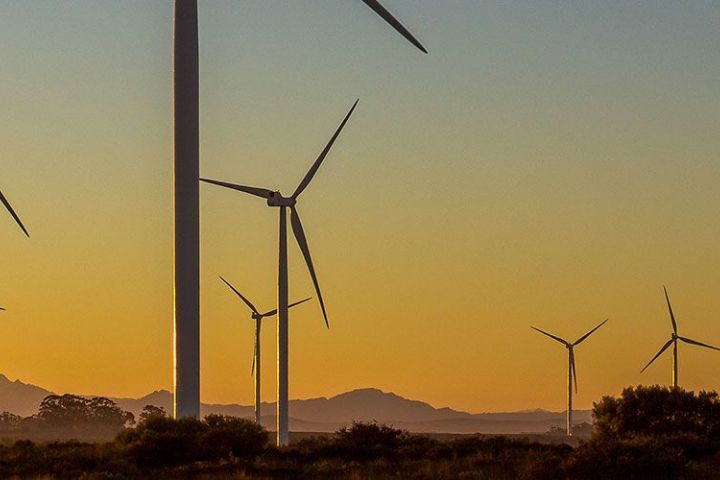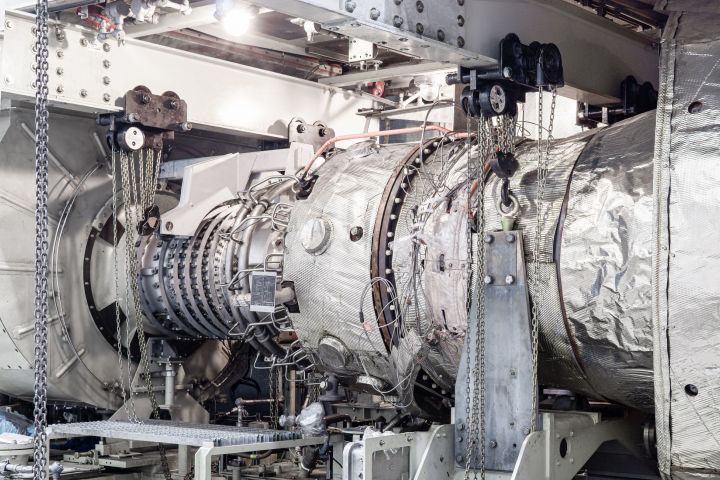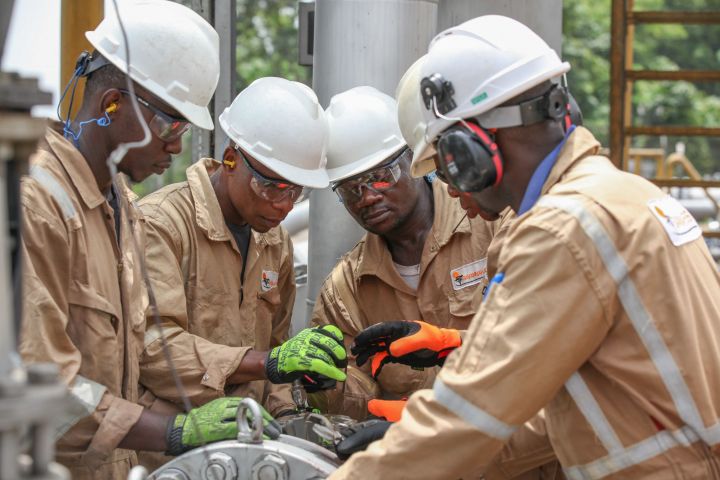Our hydrocarbon AND renewable energy assets strategy is supporting the energy transition in Africa, alongside the responsible stewardship of our assets and operations

Our approach
Our ambition in the fourth pillar of our sustainability strategy is to minimise our GHG emissions and manage our impacts on the environment. Recognising the threat of climate change, we are committed to the responsible stewardship of our assets and operations – both existing and those we seek to acquire in the future – by reducing our GHG emissions where possible and managing our other environmental aspects such as impacts on biodiversity, fresh water use, waste and local air quality. At the same time, we are also focusing on the growth of our power business, investing in the development of large-scale renewable hydroelectric, solar and wind power projects in Africa.
We realise that our environmental impacts extend beyond our GHG emissions and so we also track best practice developments in sustainability reporting and the opinions of our stakeholders with respect to other environmental aspects such as impacts on biodiversity and water management. Our key focus is on meeting our regulatory obligations in the countries where we operate through a robust framework of policies, procedures, processes and controls. In 2024 we prepared carbon and energy management plans detailing how we plan to minimise flaring and greenhouse gas emissions at our Stubb Creek and Uquo facilities.
We continue to strengthen our Power Division, adding to our existing portfolio of large-scale hydroelectric, solar and wind projects, through the proposed acquisition of interests in three East African hydropower assets: the 255 MW Bujagali hydropower plant in Uganda and two advanced-stage developments, the 361 MW Mpatamanga project in Malawi and the 206 MW Ruzizi III project, spanning Burundi, the DRC, and Rwanda. The Bujagali hydropower plant currently supplies approximately 31% of Uganda’s electricity, while the two development projects are expected to provide affordable, reliable electricity to over 30 million people in the region.

Mitigating our environmental impacts
There was a substantial reduction in our Scope 1 and 2 CO2e emissions in 2024 to 36,216.5 tonnes, a 49% reduction compared with 2023 (70,804 tonnes).
Beyond our GHG emissions, we recognise that oil and gas production can have other environmental impacts:
- We are pleased to report that in 2024 we continued to have zero (2023: zero) operational hydrocarbon spills from operations (defined as not greater than one barrel) reaching the environment and we remain focused on avoiding any unplanned discharge that has negative environmental impacts;
- We used approximately 10,524 m3 of fresh water in 2024 (2023: 10,592 m3); and
- With respect to biodiversity, in 2024 we continued to progress the field work required for the ESIAs for the Parc Eolien de la Tarka wind farm and Bini a Warak hybrid hydroelectric and solar projects.

Reducing flaring
At the Uquo CPF CO2e emissions from flaring and venting reduced substantially in 2024 due to plant upgrades and improved monitoring and operational practices. During the year we commissioned a new Cummins generator at our Uquo CPF and two more are to be commissioned shortly. These new units are expected to deliver very substantial reductions in atmospheric emissions of up to 30% compared to the specifications of the Caterpillar units that they have replaced. The expansion programme at Stubb Creek is also planned to include the implementation of measures to eliminate routine flaring and reduce it to essential purge and pilot only.
Our annual reporting metrics
- Scope 1 GHG emissions in tonnes of CO2e.
- Scope 2 GHG emissions in tonnes of CO2e.
- Carbon intensity ratio in kg CO2e/boe.
- Carbon intensity ratio in tonnes of CO2e/’000 tonnes of hydrocarbons for Scope 1, 2 and 3.
- Carbon intensity ratio in g CO2e/MJ.
- Energy consumption in the United Kingdom in kWh.
- Number of operational hydrocarbon spills.
- Freshwater usage in m3.
2024 performance
- Our total direct GHG emissions (Scope 1) were 36,101 tonnes of CO2e (2023: 70,741 tonnes of CO2e).
- Our total indirect GHG emissions (Scope 2) were 115.5 tonnes of CO2e (2023: 63 tonnes of CO2e).
- Our carbon intensity ratio was 5.7 kg CO2e/boe (2023: 10.7 kg CO2e/boe).
- Our carbon intensity ratio in tonnes of CO2e/’000 tonnes of hydrocarbons was 41.7 (2023: 78.8).
- Our g CO2/e/MJ carbon intensity ratio was 54.9 g CO2e/MJ (2023: 54.9 g CO2e/MJ) for Scope 1, 2 and 3.
- In the United Kingdom, we consumed 367,819 kWh of energy (2023: 139,650 kWh).
- Zero operational hydrocarbon spills (2023: zero).
- 10,524 m3 of freshwater usage (2023: 10,592 m3).
2025 objectives
Savannah is committed to respecting the environment:
- In 2024 we commissioned a new Cummings generator at our Uquo CPF and two more should be commissioned shortly. These new units are expected to deliver very substantial reductions in atmospheric emissions of up to 30% compared to the specifications of the Caterpillar units that they have replaced; and
- As part of the Stubb Creek expansion programme, we plan to implement measures in 2025 to start work on the production expansion project. This is to include measures to eliminate routine flaring and reduce flaring at Stubb Creek to essential purge and pilot only.

Installing low-emissions generators at our Uquo CPF in Nigeria
Since the original commissioning and start-up of our Uquo CPF in 2013, power generation at the facility has historically been provided by three Caterpillar gas engine generators. Given their age-related deteriorating performance, we made the decision in 2024 to replace all three power generators and took the opportunity to upgrade to more efficient and lower-emissions Cummings gas engine generators. These are not only expected to reduce our GHG emissions from power generation but also our NOx emissions, improving local air quality.
A comparison of the specifications of new and old gas engine generators shows that the new generators are designed to deliver a 30% reduction in NOx emissions intensity and a 20% to 24% reduction in CO2 emissions intensity (depending on the generator load). This is an excellent example of our commitment to operate our assets safely, efficiently and sustainably.
The installation and commissioning of one unit was completed in 2024, while the two other units should be commissioned by the end of H1 2025.
The installation of low-emissions generators at our Uquo CPF supports Pillar 4 of our sustainability strategy, “Respecting the environment”, and is aligned with five of our chosen 13 UN SDGs.



